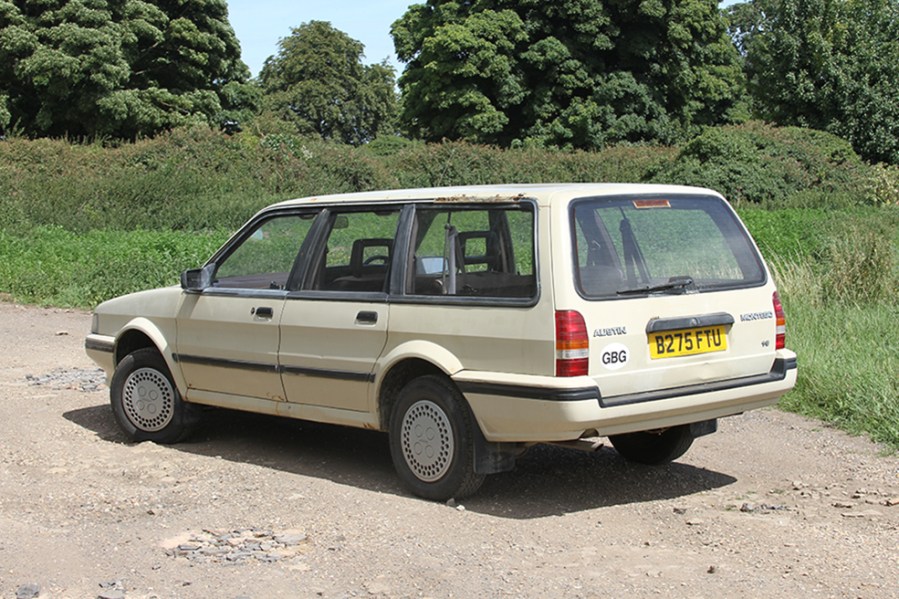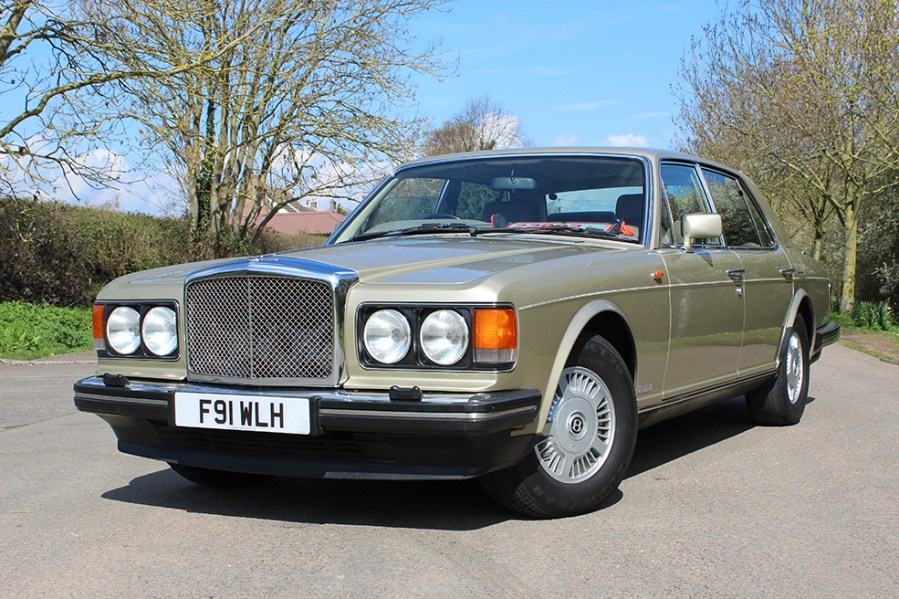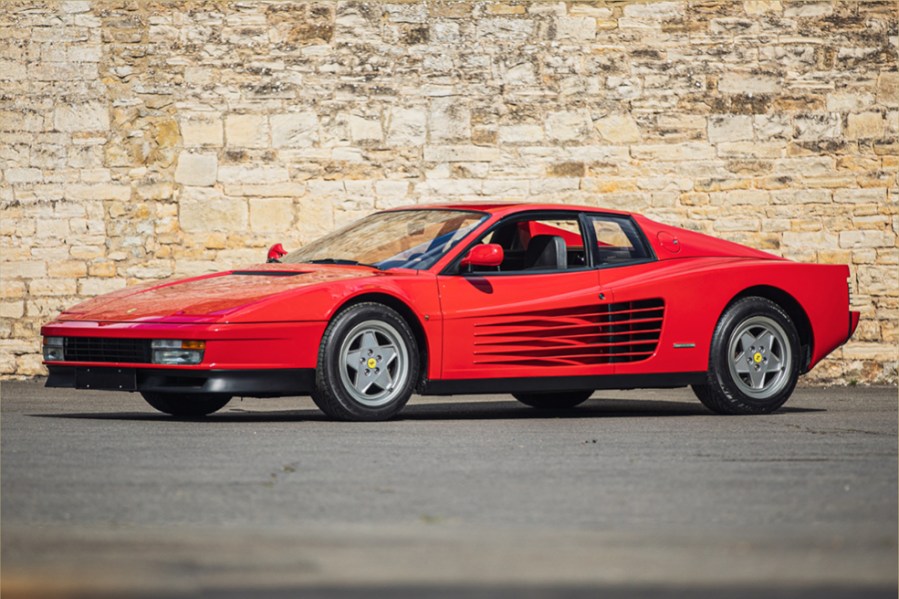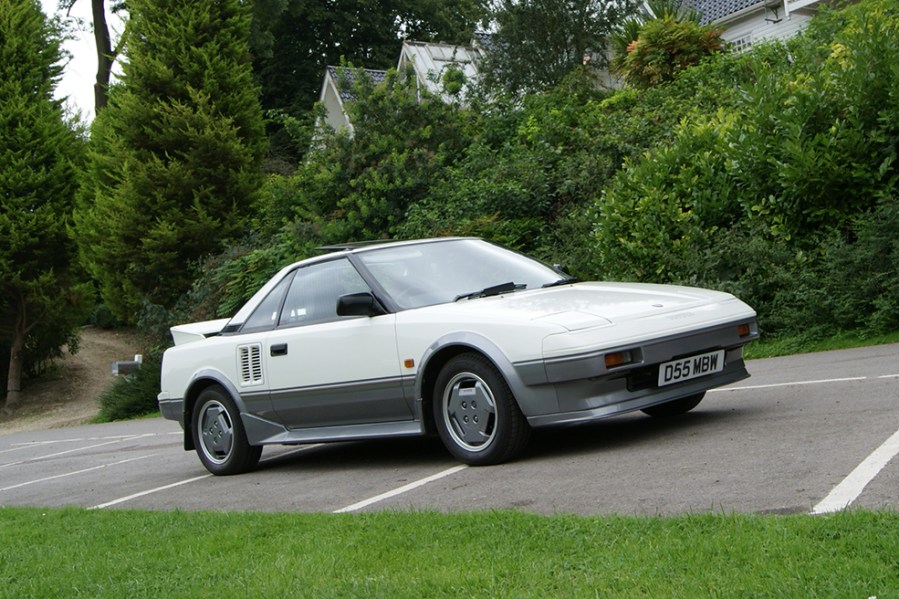Launched 40 years ago, some of these classics have only just graduated from the bargain basement – and many are enjoying a resurgence in interest. Here are our favourite classic cars of 1984
Words: Joe Miller
Austin Montego
After the Ital served only to demonstrate how ludicrously outdated the Marina platform was, it was vital that British Leyland replace it with something modern and standout. Project LM11 would be a saloon derivative of LM10, the Maestro, and use the same front-wheel drive transverse layout and MacPherson strut front suspension. Badged Montego, the new saloon looked sharp and modern in 1984 despite a long development period, sporting body-coloured bumpers that made rivals look comparatively dated. Inside too, the Montego was modern, with generous equipment, a curvaceous dashboard and sharp instrument cluster, the earliest MG variants getting an LCD display you either loved or hated. The MG sat close to the top of the range, with only the plush Vanden Plas costing more.
The Estate variant proved a hit, with vast luggage capacity and optional rear-facing jump seat, as well as Mercedes-esque self-levelling rear suspension. So accomplished was the Montego Estate, in fact, that designer Roy Axe won a Design Council award for it, the load-lugger proving a popular company car choice throughout the 1980s. The new overhead-cam S-Series petrol made its debut in the Montego, while the 2.0-litre O-Series was available with or without fuel injection, and from 1985, a turbocharger. Developing 150bhp, the resultant 126mph MG Montego Turbo was the fastest production MG ever at the time of its launch. Sadly, iffy build quality quickly led to a reputation for unreliability for the Montego, with many examples recalled multiple times within their warranty period.
Things improved though, and a 1988 facelift enhanced the Montego’s appeal. This was further buoyed up by both the Perkins-engined diesel model, and the new Countryman estate, which proved to be something of a favourite among trendy types. Saloon production finished in early 1993, but the estate continued until December 1994 – almost a year after Rover’s takeover by BMW.
However, a small but loyal group of Montego fans ensure that some tidy examples survive today, allowing precious few to sample the often-forgotten excellent ride quality, tidy handling and good engine options. With so many sent to scrap during the 1990s and early-2000s, you’ll have to search hard to find a Montego today, but do so and you can get into this rare ’80s rep car for under £3000.

Bentley Eight
Rarely does the word ‘cheap’ follow the word ‘Bentley’, but the Eight was the introduction of a more affordable model from the luxury marque in 1984. Pitched at the ‘up to £50,000’ market dominated by the Mercedes S-Class, the Bentley Eight surrendered some equipment and niceties of the Mulsanne to compete with cheaper German rivals. The slatted grille was replaced with mesh, headlight wipers were deleted, steel wheels replaced alloys, the lambswool rugs and companion mirrors in the rear quarters were left out and, initially, leather trim gave way to cloth.
The theory of an entry-level Bentley sounded great, but in practice, few buyers wanted a base-spec model, nor were they willing to forego some Bentley opulence for the badge, preferring a fully loaded Mercedes or Jaguar at a lower price. The spec improved over time to include the anti-lock brakes, electric leather seats and automatic ride height adjustment of higher-rung models, but by then the price gulf between the Eight and Mulsanne was getting small enough to question whether it was worth it. As a result, fewer than 1800 Eights were built and today, it’s amongst the rarest Bentley models available.
The 6.75-litre V8 might not have the punch of the Turbo R, but the L-Series is a charming, reassuringly solid lump even in naturally aspirated guise, and without forced induction, you might coax mpg in the high-teens out of one. The simpler mechanicals of the Eight, particularly an earlier car, mean it could be the wisest entry to Bentley ownership, with prices starting around £5000. Buy carefully, however – now, as back in period, it’s all too easy to stray into Mulsanne or even Turbo R price territory, where you’ll get more for your money.

Ferrari Testarossa
Ferrari’s 512 ‘BB’ (Berlinetta-Boxer) had finally given Maranello a mid-engined supercar to challenge Lamborghini, but Ferrari hadn’t quite got the hang of midship packaging for its flat-12-engined creation. The radiator pipework running front the front to the back of the car caused the cabin to get uncomfortably hot when driven hard, as well as impacting on any luggage or passenger space available.
Accordingly, its 1984 replacement was six inches wider and three inches longer, granting space for a carpeted luggage space in the front and extra room behind the seats. A roofline that was half an inch higher also allowed more headroom in a car christened the Testarossa – the Italian for Redhead, and named after the red cam covers on the flat-12 engine.
Like most cars of the era, aerodynamics played a big part in the Testarossa’s design, with the enormous trademark side strakes funneling air along the bodywork to the side-mounted radiators. Controversial this design element might’ve been, but the vast size and striking proportions of the Testarossa certainly gave it presence, not to mention a slippery 0.36 drag coefficient, significantly better than the – now winged – Lamborghini Countach. The Testarossa had the go to match the show too, with its 48-valve 4.9-litre flat-12 producing 385bhp and granting 0-60mph in 5.8 seconds. The double-wishbone suspension setup gave the vast Testarossa a softer ride and more body roll than you might expect of a supercar, but that made it remarkably pliant and comfortable for such an exotic.
The distinctive style, epic exhaust note, near unbeatable performance and starring role in Miami Vice assured the Testarossa’s place in pop culture and with famous owners including Elton John, Rod Stewart, Mike Tyson, Dr. Dre and M.C. Hammer. Indeed, few cars better define the 80s ‘yuppie’, or the excess of the era, than the Ferrari Testarossa. It’s one of the most iconic cars of the 1980s, but at £100,000 or more these days, it’s also one of the priciest.

Mercedes W124
The W123 perfectly embodied Mercedes Benz’s attention to engineering, being a practical, durable, versatile, comfortable and fantastically well-made model that proved popular globally, appealing to everyone from German executives on the Autobahn to taxi drivers in Africa. To improve on such a successful, popular model, Mercedes made lots of incremental changes rather than reinventing the wheel; Bruno Sacco was employed to create a modern evolution of the now-iconic W123 look, and he did so with a gently raked front end, flush-fit grille and more integrated bumpers, all creating a handsome modern look that was far more aerodynamic – plastic underbody cladding gave the W124 a 0.28Cd in its slipperiest guise.
Being so aerodynamic improved performance and fuel economy, as well as cutting down on wind noise. Allied to the thicker steel and additional sound deadening, this gave the new car an even more refined, insulated cabin. A more modern dashboard complete with soft-touch plastics, more sculpted seats and, in later life, airbags, updated the interior look and feel, with 100kg of body bracing added to the convertible and pillarless coupe variants to maintain the refinement.
The multi-link rear suspension from the 190E was added to give the large executive Mercedes handling to rival BMW, while rubber front top-mounts retained the comfort and refinement. The quality Benz had become famous for very much remained, too – a survey by German breakdown company ADAC found that the W124 was 40 per cent more reliable than the hardly fragile Audi 100, and every piece of trim and switchgear you interact with will still feel bombproof some four decades later. Combine all that with an eclectic range of petrol and diesel engines and the option of saloon, coupe, estate and convertible variants, and it’s no wonder Mercedes sold 2.56 million 124s over 13 years – production began in November 1984 and ran up until 1997. What’s more, the first Mercedes badged ‘E-Class’ is still an affordably daily-driver classic today, with roadworthy examples starting at £2000.

Renault Espace Mk1
Following the cult popularity of its Rancho, Matra had ideas for an even more versatile family car that was big on space. Matra produced its family multipurpose vehicle concept for Simca, but when its parent company Chrysler Europe was bought out by PSA in 1978, the project was canned for being too risky and expensive. Matra took back the design and offered it to Renault, which took it on and named it Espace – the French word for space. To maximise engine choice, Renault adapted Matra’s concept to use longitudinal engines, but every available inch was utilised, with the radiator moved to one side and the front of the engine practically touching the grille.
To balance size and space without paying a weight penalty, the Espace of 1984 used a fiberglass body atop a galvanized steel monocoque. Inside, the interior was a packaging masterclass, with three rows of seats allowing for seven passengers, but those seats could fold, slide, swivel or be removed, allowing for any number of seating configurations. This meant the Espace could serve as everything from a family wagon, to meeting room on wheels, or even a comfortable van. The Espace was unlike any other car when launched in 1984, and the unusual looks meant initial sales were poor, but the versatility of the MPV quickly made itself known and the Espace kickstarted a craze, with people-carriers becoming nigh-on the default family choice in Europe until recently.
As the Espace was designed as a family car, the vast majority of those sold were used, abused and discarded. Indeed, a Mk1 is rarer in Britain than any of the exotics we’ve mentioned. In recent months, a project sold at auction for £1100, whereas a mint example sold at a dealer for £4695. If you can find a Mk1 Espace, you’ll have the rarest and perhaps most practical car on the block.

Toyota MR2 Mk1
Despite sports cars losing favour to the hot hatchback in the 1980s, Toyota persisted with a compact, affordable midship runabout two-seater (hence ‘MR2’) that would turn out to be a gem. Experiments into different drive layouts and engine placement led to a mid-engined sports car, culminating in the SA-X concept of 1981. The futuristic sports car was well-received, so work proceeded to put the MR2 into production by 1984.
Costs were kept down by borrowing parts from other Toyotas – the E80 Corolla donated its 1.6-litre 4A-GE engine, as well as its front subframe. To alter the front-wheel drive Corolla engine for the mid-engined layout, Toyota simply rotated the subframe 180 degrees – look closely underneath an MR2 and you’ll spot the tie rods retained from the Corolla application. The light circa-1000kg weight, mid-engine balance and sweet suspension designed by Lotus engineer Robert Becker created a fantastically fun sports car, complete with trendy wedge styling and optional – if occasionally leaky – Targa-top roof.
The MR2 arrived in the UK the following year with a price tag of around £9000, and the combination of punchy performance and sweet handling soon had it amassing plenty of plaudits from the motoring press. Those qualities are still evident today, and let’s not forget the MR2 is a Toyota at the end of the day, so reliability is all but unimpeachable. A well-equipped cabin and decent boot mean it’s useable day-to-day, and the lightweight and small engine mean 30mpg is perfectly achievable.
By 1987 it was time for a light MR2 refresh; along with minor tweaks to the exterior styling and bodyshell, this delivered improvements to the engine, a stronger gearbox, better brakes and suspension revisions. The first-generation MR2 would stay in production until 1989, when it was replaced by the bigger W20 second-generation model.
In summary, the first-generation MR2 might not have prevented the hot hatchback takeover, but it kept the sports car flame alive – alongside the Honda CRX and Alfa Spider – during a quiet era for such vehicles. Sadly, a typically Japanese appetite for rust means relatively few early MR2s survive these days, and their cult classic status means values are rising. Around £7000 is your starting point, but £10,000 will buy a very good example that should turn out to be a worthwhile investment.







